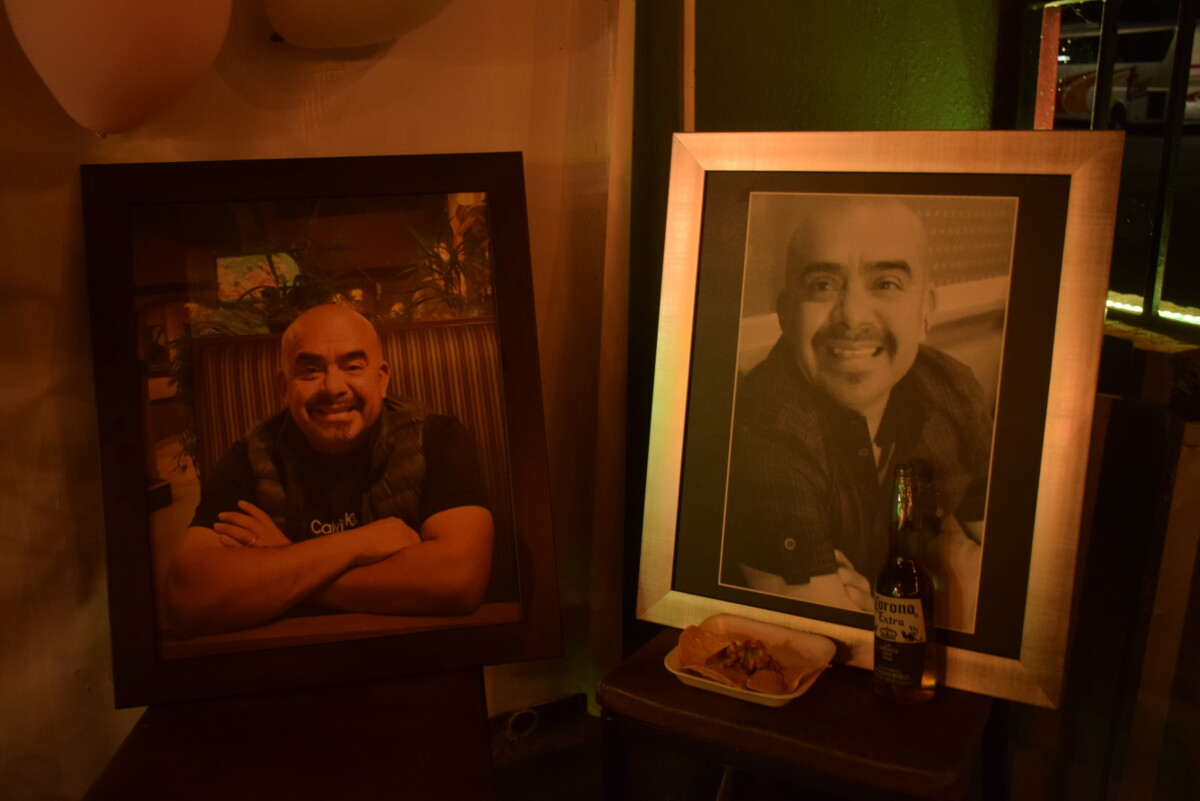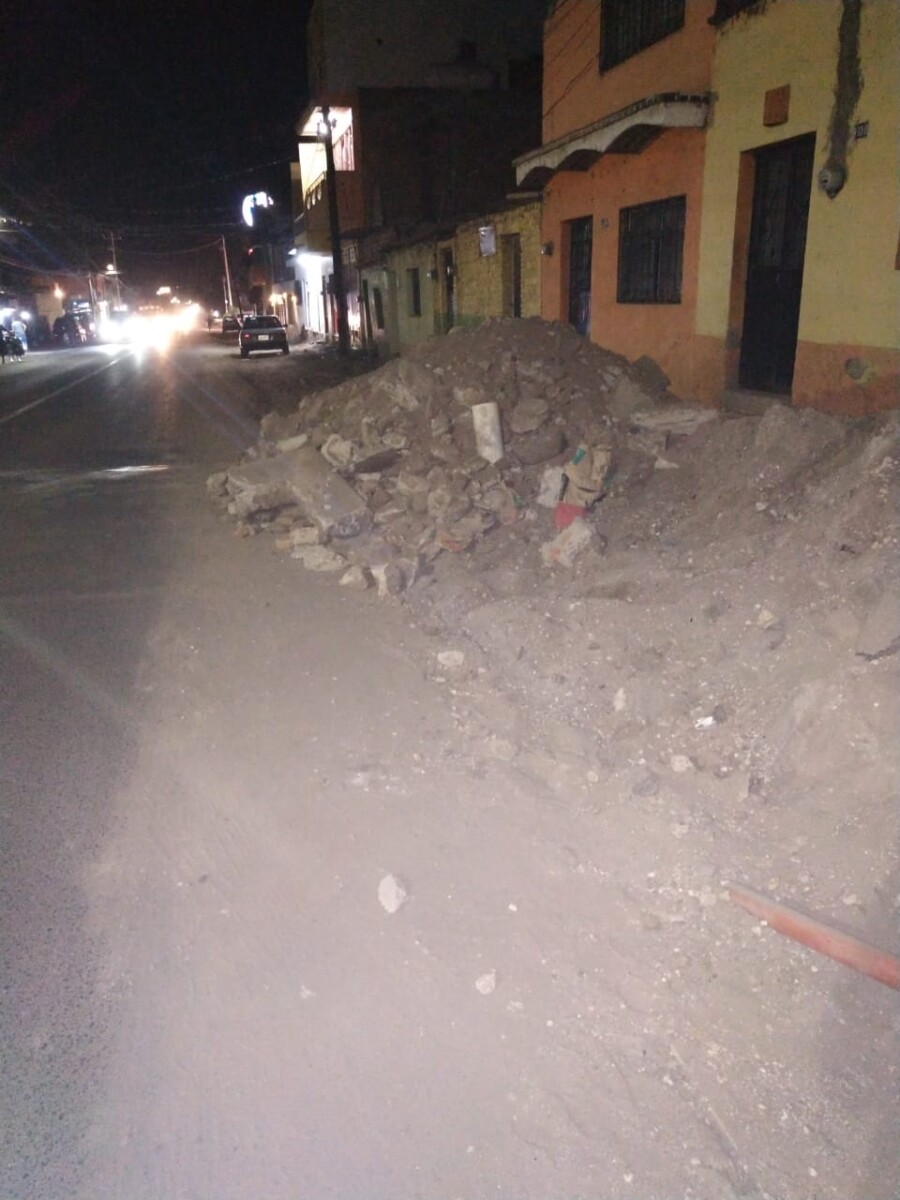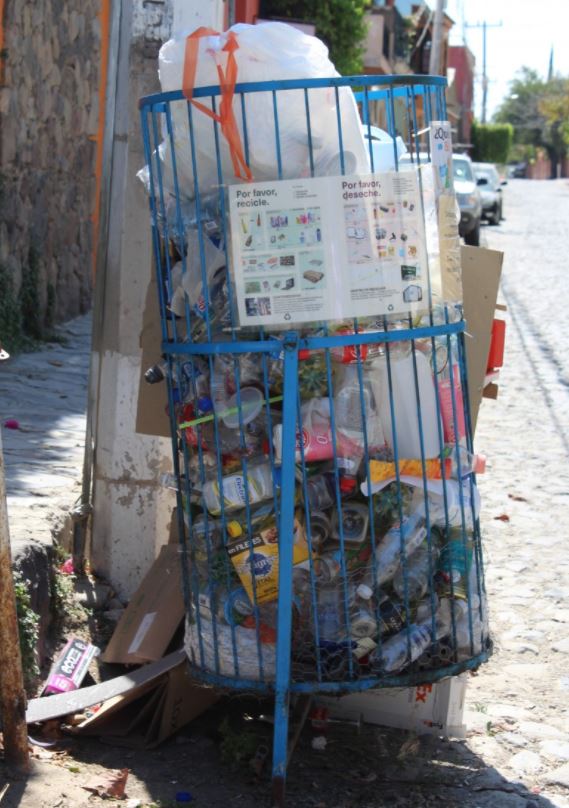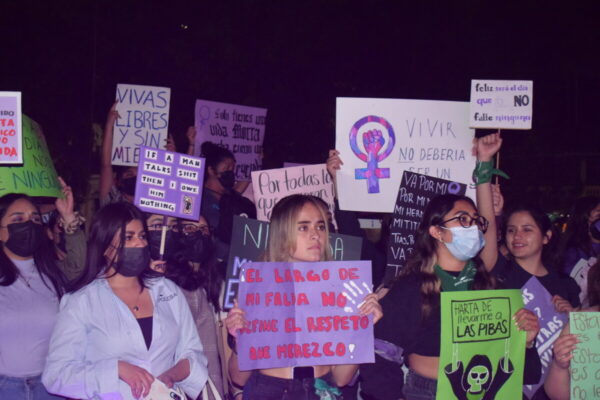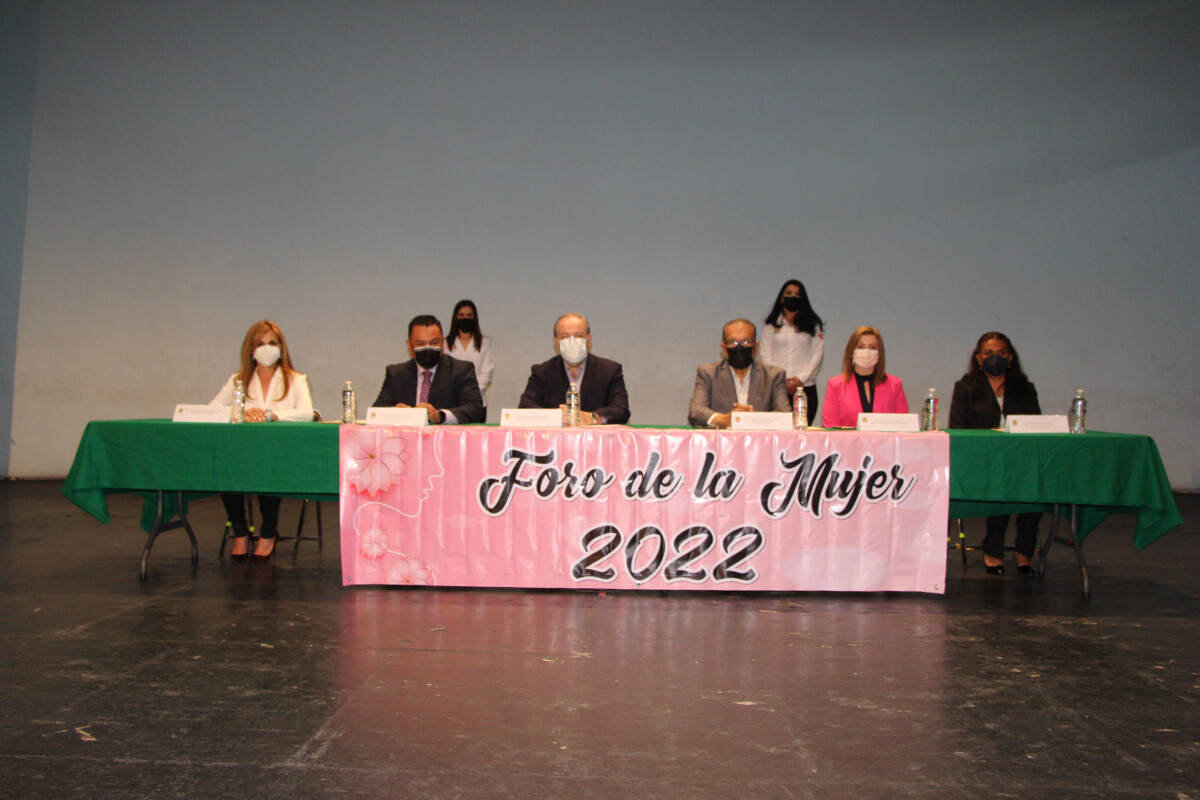gente
Ofrece Centro Comunitario clases gratuitas en San Nicolás de Ibarra
Los niños y adolescentes de 6 a 14 años durante su clase de boxeo. Los estudiantes son divididos según su conocimiento, principiantes o avanzados.
Jazmín Stengel.- David Venegas y Juan Antonio Vázquez Ayala son los fundadores del Centro Comunitario San Nicolás de Ibarra, en Chapala, que ofrece clases gratuitas a niños y adolescentes con el fin de mejorar su futuro y el de la comunidad.
Ambos jóvenes lograron su objetivo en octubre del año pasado, tras un mes de arduo esfuerzo, cuando comenzaron a impartir las primeras clases de boxeo y asesoría legal, mismas que hasta la fecha siguen presentes martes y jueves a partir de las 5:30 de la tarde en las instalaciones de la delegación del pueblo.

Los fundadores del Centro Comunitario San Nicolás de Ibarra frente al corazón de la casa hogar Love in Action. (Der.) David Venegas empresario, a su izquierda Juan Antonio Vázquez Ayala, Licenciado en Recursos Humanos y encargado de la selección de boxeo del Cuciénega, U de G.
El siguiente paso es restablecer las clases de computación e inglés que fueron suspendidas a falta del docente. Los materiales y fondos para el sueldo, ya están previstos, afirmó Vázquez Ayala quien además de ser entrenador y asesor legal, se dedica a «tocar puertas» para recaudar los fondos necesarios.
David Venegas también cumple con un rol muy importante en ese sentido, ya que al ir y venir de Estados Unidos tiene la facilidad de contactar a los hijos ausentes y reunir algunos dólares para la causa. O lo que también muchos hacen, donar los materiales y herramientas de trabajo que tanto el alumnado como el equipo necesita.
Venegas es mercadólogo y ambos organizadores de eventos, lo que le da un plus a la recaudación de fondos. Sin embargo, los equipos son caros y siempre se necesita algo, por lo que implementaron una cuenta de donaciones en la página Gofundme bajo el vínculo https://gofund.me/c4f261d2 que facilite los donativos a más personas.

Los niños y adolescentes realizan los estiramientos tras calentar para comenzar la clase de box.
Además de las clases ya mencionadas, los jóvenes apoyan a la casa hogar Love in Action de Chapala una vez al mes con diferentes tipos de recursos, y quieren agregar una caja de ahorro para ayudar a las personas más necesitadas de San Nicolás de Ibarra y Santa Cruz de la Soledad en casos de emergencia o enfermedad.
Para lograr la caja de ahorros, David y Antonio han planeado su próximo evento, que será el 18 de marzo sobre la calle Juárez en el conocido local de Parra en San Nicolás de Ibarra a partir de las 8:00 de la noche con la presencia de la Banda Los de la R y Dj Octavio originario de la Ribera de Chapala; este evento tendrá un costo de 50 pesos en beneficio del Centro Comunitario.
La asesoría legal se tiene al servicio las 24 horas marcando el número 33 1303 5942 con Juan Antonio Vázquez Ayala o en la página de Facebook: Centro Comunitario San Nicolás de Ibarra.
Jorge Luis Padilla ‘El Trokita’
A permanent altar set up by the family in memory of Jorge Luis Padilla Perales during the 50th birthday of his sister Silvia Araceli at El Toro restaurant.
Jazmín Stengel (Chapala).– Trokita was an example to follow. Jorge Luis Padilla Perales, 1970 – 2021, better known in Chapala and California as ‘El Trokita’, was and will continue to be the absent son with the most presence in his hometown. His memory was engraved forever in the Paseo de los Ausentes on February 24.
“Hijos Ausentes” or Absent Children is a time-honored tradition for children who emigrate to the US or Canada to send money back to help support their family and hometown community. The Paseo de los Ausentes is a walkway in Chapala dedicated to their honor.
Jorge Luis was the oldest of five siblings and originally from the La Purisima neighborhood in Chapala. In 1987 he left for the United States at the young age of 17, with the mission of helping his mother Margarita Perales Perez after the separation with his father Jose Luis Padilla Sanchez.
From a young age, Padilla Perales was very supportive, «he took care of his people,» recalls Sandra, the second of the siblings, to whom he was very close. Once in California, ‘El Trokita’, a nickname that has been passed down through the generations to the men of the Padilla family, dedicated his time and effort to a graphic design printing company, with which he managed to support his family.
Like most absent children, there were times when ‘El Trokita’ visited. But he «never traveled empty-handed,» his family recalled. Jorge began his altruistic work by collecting money from fellow California emigrants to support Chapala’s needy with resources.
«He organized fairs and events,» said his sister Silvia. Trokita was supportive of those in need, «he bought medicine for the sick and even bought wheelchairs,» added Sandra.
For these and many other things, such as distributing food, promoting sports and supporting the education of children, Jorge remained until his last breath as the active link between the absent children and his people, an action that earned him the love of the people of Chapala.
After his death, still unknown to the family, on November 15, 2021, Sandra dedicated a corrido (story told through song) to her brother so that everyone in Chapala and California can remember him as he was. It can be found on YouTube with the title «Jorge Luis Padilla ‘El Trokita».
Sandra acknowledged that no one can match the social work that her brother was able to do to benefit the community of Chapala. But that does not mean that his legacy will be lost, «we will do our best to continue his mission, each one in the best way we can,» she said.
Following the death of ‘El Trokita’, the Government of Chapala announced Salvador Alcántar Hernández as the new Coordinator of Chapala’s Absent Children on February 24. The same day the black granite plaque honoring the memory of Jorge Luis Padilla Perales was placed in the Paseo de los Ausentes next to Chapala’s main square.
Translated by Christalle Dalsted
Construction of bike path snarls traffic in San Juan Cosalá
Heavy machines in the area sometimes block one of the lanes of the road causing traffic. Photo by: Alma Serrano.
Alma Serrano (San Juan Cosalá).– Construction on the bicycle lane on the Chapala-Jocotepec carretera, in San Juan Cosalá has caused difficulty for both motorists and pedestrians.
Dump trucks and cement mixers are having to enter the car traffic lanes periodically, blocking the already busy road. Pedestrians are also facing obstacles, as there is little space to walk along the edge. Construction debris generated by the work is not always removed at the end of the workday.

The debris generated by the work makes pedestrian traffic difficult because it blocks space on the left on the side of the road. Photo by: Alma Serrano.
In addition, exposed wires, unmarked excavations, and construction tools are left out; the area is dangerous for pedestrians and cyclists, especially at night. «It is not good that they leave debris on the road because accidents happen, especially at night,» commented a resident.
According to information from the Jalisco Ministry of Infrastructure and Public Works (SIOP), the San Juan Cosalá section of the bike path is 85% complete, and is expected to be finished by the end of March.
Translated by Amy Esperanto
Lakeside Chronicles
Francisca Lomelí Rodríguez is 96 years old and has retained all her vivid memories that describe the San Cristóbal of her childhood. Photo by: María Reynozo.
By: María del Refugio Reynozo Medina
Francisca Lomelí was orphaned at the age of eight. School was her life. In the San Cristóbal Zapotitlán of her childhood, classes only went up to third grade. She attended school and she remembers the name of her teacher, Trina.
The school was made of adobe and reed. It was not surrounded by a wall, but by a “wall” of huizaches and nopales (native trees and cactus). In addition to learning how to read, the girls learned how to sew and embroider napkins. They spent a lot of time at school because at noon they went home for lunch and then returned to continue the afternoon’s classes. At the end of the school year, the municipal president, accompanied by the town delegate, would go to see the students’ final work. The teachers would place a sample of the student’s embroidered napkins on display.
Corporal punishment was given by wooden ruler. When students did not finish their homework, they were given a few slaps of the ruler.
The teacher wrote lessons in chalk on a blackboard, using a cloth as an eraser. There were no notebooks. The students would buy a sheet of brown paper and tear it into four parts, and when the pages were worn out on both sides, they would buy another sheet.
Francisca remembers the delegate of that time, Beatriz Chavez’s father. He used to openly carry a gun every day. He was a man who was respected. He paid to have a cobblestone pavement installed in town. Despite looking different today, the plaza was the place to go for prominades and serenades.
Chica, as Francisca is known to the townspeople, remembers the nights of music and the women and men milling around. Some women would carry a “chiquihuite” or palm basket with flowers from their garden and sell them for pennies. It used to be very common for there to be fights on holidays. Men would go around armed with guns or knives. Sometimes as many as three or four people were killed, who were left lying around while the aggressor escaped, as there were no police as there are now. The police, who sometimes appeared, were called «Los Charros» by the people.
The women were guarded carefully by their male siblings and parents, although some, when there were weddings, carried a bottle of punch and danced to the music of the harp.
-We waltzed,» they would say.
Chica remembers “El Vapor,” which was a very large boat that came from Chapala. In the morning, very early, it arrived for the passengers and returned in the afternoon. On its journey over the waves of the waters of Chapala, El Vapor, emitted a high-pitched noise that reached the ears of the locals. It was a strange noise, like in the famous song «La Llorona,» the locals said.
People would come to the shore in the morning to say goodbye to their relatives and watch the boat floating in the water, until it was gone from view. In the afternoon, they would also come to the shore to receive the passengers, who came loaded with packages from errands in Chapala.
The steamboat was the only way out, since there was no highway around the lake in those times. The first streets that were made were called caminos. Everything was surrounded by mountains, so it was difficult traveling over them.
In town of San Cristobal, there was not much to buy. There was a store owned by Arnulfo and Lola Aceves. Everything could be bought by centavos: a centavo of butter, a centavo of salt, a centavo of cheese.
Another man was called Tacho. He sold meat, but not every day. When he was going to slaughter an animal, he would announce himself by standing in the middle of the street rubbing his knives against each other. The sound could be heard for many blocks and people knew that there would be fresh meat that day.
“Tacho is sharpening his knives,» people would think, and they would prepare to go shopping. Pigs and chickens were raised in the houses. On special days people would slaughter the pigs that they had raised. Chica remembers the whiteness of the lard and the smell of pork rinds from the houses, as there is no other smell like it. The pigs roamed the streets and none of them got lost. They could roam all day long and return home in the evening to sleep. Sometimes the sows were heavily pregnant and returned home, accompanied by the piglets walking alongside their mother. The chickens were also on the loose, going to and from their homes.
The water of the lagoon was so clean that the people could drink it. The townspeople went with pitchers to bring it back in order to prepare food and also to drink. Chica remembers that her grandfather had some beehives and extracted a lot of honey from them. He would invite the neighbors to bring a small pot to share his honey with them.
There was an «old boy» (that’s what they called him because he never married), but he was a older man. He sold bread in town.
The church was an old building, made of adobe and tile. Father Prisciliano Michel contributed to its improvement. Chica remembers, when she was a child, that after mass they would bring sand from the cemetery. Everyone cooperated, young and old, with whatever they could, and if they could bring a brick, they contributed.
The villagers contributed to the construction of the temple. There was a lot of religious fervor during Holy Week, remember that the women only made hats until Wednesday because Thursday, Friday and Saturday were days of mourning and fasting. The images hanging on the walls were covered with purple cloth as a sign of mourning. No music was played, and many went to church on their knees in the street. Nor did people ride horses; if they passed a cross, they crossed themselves with reverence and the men took off their hats.
In the town there was no Health Center; Daniel Cervantes was everyone’s doctor, he gave injections, he was very good at curing people. Then a doctor Ureña started to come, and another one was called Dr. Cuervo.
From her bed, Francisca continues talking about her childhood and youth.
It was nice,» she says with a smile.
When I ask her about her husband, she says:
“He was my first and last boyfriend.”
José Reynoso and she never talked, they shortened the distance with messages sent through friends, or with José’s whistles from the street informing her that he had been near. On some occasions her friend Margarita Solano, warned her.
-Chirin, chirin!
She would exclaim from the door and Chica would come out to greet her and raise her hand, while behind her friend’s back, Jose would return her greeting from a distance.
Translated by Colleen Beery
New furniture for two schools in Jocotepec
The 246 new and ready to install chairs were received last week by the J. Vicente Negrete school. Photo: Courtesy.
Héctor Ruiz Mejía (Jocotepec).– The Jalisco Ministry of Education (SEJ), in coordination with municipal authorities, delivered furniture for two basic education schools in Jocotepec last week.
After 20 years of being overlooked, the J. Vicente Negrete elementary school in El Molino and the Francisco Villa elementary school in La Loma received 711,978.56 pesos (about US$34,000) in school equipment.
The Francisco Villa school received 246 chairs made of ironwork with plastic and 126 binary tables for students, at a cost of 362,743.60 pesos (about US$17,300).
In the case of J. Vicente Negrete, the equipment also consisted of 246 chairs and 126 tables, plus 12 chairs specifically for the teaching staff at a value of 349,234.96 pesos (about US$16,700).

Jocotepec City Hall personnel delivered the furniture to the J. Vicente Negrete school in El Molino. Photo: Courtesy.
«The Ministry of Education provided complete furniture for the elementary school in collaboration with the municipality’s personnel,» stated Ana María Cano Espinoza, director of education of the municipality.
Mayra Berenice García Ramírez, principal of the J. Vicente Negrete school, thanked the authorities for the support and for «finally being listened to,» as she explained that their equipment had not been updated for more than 20 years.
«The children are thrilled with the new furniture, it already feels different. We had been using the same tables and chairs for more than 20 years and they were getting uncomfortable,» she said.
Also, the SSJ provided 160 meters of wiring for the El Molino elementary school because in September 2021 it suffered several robberies that left it without electrical circuits.
Translated by Sandy Britton
Health and Wellness:
By Leticia Trejo
Have you ever had a friend who goes to the gym or jogging every day and even spends weekends exercising? If we dare to make the observation that he has become addicted to physical activity, he might say that at least his addiction is healthy. In this article we will examine the scientific reasons why excessive exercise is not healthy.
Body fat is the body’s most durable fuel. Muscle mass is the body’s most nutritious food. When there is a health emergency, the body takes the most nutritious element and stores the most durable one. For example, remember those old diets where the person ate only apples and water for more than 15 days? This nutrient deprivation caused the body to consume itself, reducing the muscle mass, but leaving the fat. The same happens when we perform an excess of physical activity. Once the nutrients of the day are consumed and are not replenished either with rest or proper nutrition, the body takes the muscle nutrients and leaves the fat as fuel for an emergency such as a long and difficult illness.
This means that with an excess of physical activity there is a loss of muscle mass and accumulation of fat deposits.
Then let’s consider the health of the kidneys. Imagine, dear reader, that your kidneys are a strainer like those we use in the kitchen to filter the syrup from pineapple juice. If the strainer is clogged by excess waste, its function is diminished. The same thing happens to the kidneys. Every activity of our day generates cellular waste, and every hormonal deployment becomes waste that goes into the bloodstream and then is filtered in the kidneys to remove this material in the urine. If we add two or three hours of intense exercise a day, it means that there will be an overproduction of cellular waste the kidneys will not be able to filter and it will begin to suffer damage in its important function. Jalisco has the most cases per capita of renal failure. It can take many years for a person to realize that their kidneys are damaged, it is not something that can be seen with a simple blood test.
Our vigorous friends should take note of some of the symptoms of kidney problems: very strong and unpleasant odor of urine, foam on the surface, very intense to dark yellow color. As well as severe muscle and joint pain, especially in the ankles, heels and toes and excessive exhaustion. If any of these symptoms are present the individual should visit a nephrologist (kidney specialist).
Our health and well-being needs balance; a sedentary lifestyle brings no good, but neither does excessive physical activity. I wish you a great weekend and a long and healthy life.
Translated by Christalle Dalsted
Renovation approved for Avenida Madero, one of Chapala’s main street
Chapala Mayor Alejandro Aguirre Curiel (left), with Congresswoman Claudia Murguía Torres and the Chief of the State Cabinet, Hugo Luna, after the mayor was informed of the repair approval.
Editor. – Chapala Municipal President Alejandro de Jesús Aguirre Curiel has announced approval of a Renovation of Urban Image project for the main street in downtown Chapala. Plans call for cobblestones to be replaced with hydraulic cement. Sidewalks and curbs will also be improved.
“I am very pleased that after presenting joint work projects with the government of Jalisco and the municipality, and thanks to the management of Congresswoman Claudia Murguía Torres, today the Chief of State Cabinet, Hugo Luna, has confirmed to me that the projects were accepted,” Aguirre posted on social networks.

The Public Works Department of the Municipality of Chapala closed part of Avenida Francisco I. Madero at its intersection with Paseo Ramón Corona in May 2019 to build a crosswalk.
“One of the most important projects is the renovation of Avenida Madero. The cobblestone will be replaced by hydraulic concrete, plus the sidewalks and curbs will be replaced,” he added in his March 2 posting.
In his message he thanked Jalisco Governor Enrique Alfaro Ramírez and assured that, “with this support and coordinated work our city and delegations will have better infrastructure that will be good for tourism in the state.”
Chapala Director of Social Communication Elizabeth Oropeza said the municipality is waiting for the state’s Secretary of Infrastructure and Public Works to present the project, which will be adapted by the state agency to the needs of the population.
Translated by Mike Rogers
Ajijic recycling negotiations move ahead
Full cesto destined for the Ajijic Recycling Center.
Patrick O’Heffernan (Ajijic).– In a meeting between Esther Parada of the Ajijic Recycling Center and Chapala Council members and officials Thursday, March 3, the municipalidad agreed to reactivate the government committee needed to move head with the steps required for full operation of the recycling center.
The Center is currently operating at reduced capacity because its compactor – a machine needed to reduce the recycled materials for transportation to market – has not been installed and connected to electric power. The Recycling Committee will be able to address this and other needs of the Center when it is appointed.
“Yes, we want to see a strong recycling program in Ajijic,” Director of Ecology María Guadalupe Vázquez Solano told Laguna in an interview the day before the meeting, indicating that the next step was reconstituting the recycling committee.
This will be the third attempt to operate a robust recycling program in Ajijic; the last one was stymied by the previous administration. A current sticking point has been the ownership of the building, a former military training center, and the fact that it never received an address. Without an address CFE cannot set up an account to run electricity to the building to operate the Center’s compactor, bought 18 months ago with donated funds.
According to Recycling Center officials the compactor is critical for the transportation of plastics to market. Currently they are trucked to Guadalajara in small batches which is very expensive; a compactor would make transportation up to ten times more efficient, according to Recycling center leaders. Additionally they want to ensure that they have full ownership even after the compactor is installed as part of a new agreement to use the building.
Vázquez Solano told Laguna that the government is working on the problem of an address and the delay has simply been because of logistics – many steps needed. She also told Laguna that the government intends to provide the Recycling Center with an agreement that specifies that it owns the equipment, including the compactor, clearing the way for its installation.
The meeting included General Secretary Lilia Alvarado Macías, Councilman Jesús González Amezcua, Acting Ajijic Delegate Maximiliano Macías Arceo , Director of Tourism Paola de Watterlot , Ajijic Recycling Center Representative Esther Parada, and Ecology Director María Guadalupe Vázquez Solano.
In addition to the administration’s moving ahead with the Recycling Committee , Chapala President Aguirre reinforced his commitment to the Chapala environment at a meeting Thursday, March 3, with the Secretary of Environment and Territorial Development, Sergio Graf Montero to discuss an Organic waste separation project. Creation of an Integral System of Intermunicipal Waste Management (SIMARI), cooperation with CONAGUA and SEMADET to solve the problem of green algae in Lake Chapala, and setting up links to generate the breeding and growth of different types of fish in Lake Chapala.
Se Manifiestan más de 200 mujeres en Chapala
“El largo de mi falda no define el respeto que merezco”, se leyó en uno de los muchos carteles que expresaban su derecho de vestir con libertad.
Redacción. – La manifestación pacífica por parte de las mujeres del municipio de Chapala, con motivo del “Día Internacional de la Mujer” contó con la participación de más de 200 féminas la noche del pasado 8 de marzo.
El contingente circuló a lo largo de la Avenida Francisco I. Madero de la cabecera municipal hasta llegar al edificio de la alcaldía, donde de manera pública denunciaron abusos en su contra así como los nombres de sus abusadores.
A continuación te compartimos la galería de imágenes de la manifestación tomadas por Jazmín Stengel:

Cerca de 200 jóvenes mujeres se encontraron frente al Coliseo Benito Juárez el pasado 8M para manifestar sus derechos y exhibir a sus agresores.

Al concluir la manifestación, las protestantes encendieron velas frente al altar de las que “ya no están”, en su memoría.

“Mi cuerpo no quiere tu opinión”, y “Somos el grito de las que no tienen voz”, fueron otras de las consignas presentadas en los carteles.

El ayuntamiento municipal fue cubierto durante más de dos días por carteles de protesta femenina. En una de las puertas fue colocado un altar a las desaparecidas titulado “Disculpen las molestias, nos están matando”. Y “Hasta que no me maten me vas a creer”, se lee rodeado de las 13 impresiones de Alerta Ambar que fueron colocadas.

“Una madre que está criando también está luchando”, escribieron algunas féminas que destacaban la educación antiviolencia para los actuales niños.

“Esta es mi bomba molotov”, una marcha completamente pacífica con fuertes declaraciones de casos en el municipio.

Las jóvenes protestantes formaron un círculo que bloqueó el paso del cruce principal de Francisco I. Madero con calle Morelos por cerca de 10 minutos.

El pelotón de cerca de 200 protestantes fue liderado por integrantes del Instituto de la Mujer en Chapala y activistas.

Casos de acoso y violencia por parte de hijos de funcionarios públicos, funcionarios públicos actuales, profesores y otros fueron exhibidos frente ayuntamiento municipal con el fin de “quemar” los nombres.
Personal de la SSJ conmemora el Día Internacional de la Mujeres
La sección 28 del SNTSA realizó un foro que abordó el reconocimiento de derechos de las mujeres el pasado 8 de marzo. Foto: SSJ.
Redacción.- Convocados por la sección 28 del Sindicato Nacional de Trabajadores de la Secretaría de Salud (SNTSA), personal del OPD Servicios de Salud Jalisco (SSJ) se sumó a la conmemoración del Día Internacional de las Mujeres, llevando a cabo el “Foro de la Mujer”, espacio donde se abordó el reconocimiento de derechos para este grupo de población.
Al inaugurar el foro en representación del Gobernador del Estado, Enrique Alfaro Ramírez, el titular de la Secretaría de Salud Jalisco, Fernando Petersen Aranguren, pidió nunca justificar el acoso ni ninguna forma de violencia hacia las mujeres, e instó a las y los trabajadores del sector a reflexionar sobre fenómenos que afectan el pleno goce de derechos de las mujeres, en medio de un contexto de dudas y conflictos de diferente escala.
En ese sentido, habló sobre la importancia de respetar las formas en las que los demás eligen vivir su vida y su sexualidad, así como evitar descalificar o juzgar a otras personas.
“Esta conmemoración del Día Internacional de la Mujer, puede ser una gran fecha para tomar la decisión de parar de juzgar nuestra apariencia física y la de los demás: Las decisiones sobre nuestro cuerpo son solo nuestras. Emitimos juicios -también- sobre las personas que han decidido tener o no tener hijos e hijas, es importante no juzgar”, reiteró.
Para finalizar su mensaje, el Secretario de Salud agradeció el gran trabajo que las mujeres han realizado durante estos dos años de la pandemia de COVID-19, en especial las trabajadoras de la salud al estar en el mismo “frente de batalla” contra el coronavirus.
Por su parte, el director general del OPD Servicios de Salud Jalisco, José de Jesús Méndez de Lira, resaltó que, gracias a mujeres, han aumentado los mecanismos para la atención y la protección de este grupo poblacional ante la violencia de cualquier tipo -física, psicológica, económica, laboral, comunitaria o sexual- y agregó: “Nos toca a nosotros como profesionales de la salud, aportar nuestro granito de arena para contribuir en la lucha para eliminar la violencia hacia las mujeres”.
“La importancia de contar con un equipo conformado por mujeres médicas, psicólogas, trabajadoras sociales, enfermeras, y abogadas, ha sido un gran alivio para que hoy, las mujeres posean un espacio digno donde se consideran y protegen sus derechos humanos, un lugar donde NO se les revictimiza, y donde se les empodera y apoya para dar continuidad a una vida donde la igualdad y respeto a la mujer sea preponderante y que esto se refleje en una vida mejor para ellas y sus hijos”, señaló el director del OPD.
Méndez de Lira informó que la Unidad de Atención, Prevención y Rehabilitación de la Violencia durante el año 2020 atendió a casi 480 mujeres de diferentes edades y durante el año 2021 se atendió a poco más de mil mujeres.
José Guadalupe Ramírez Robledo, secretario general de la sección 28 del SNTSA agradeció la respuesta a la convocatoria al Foro de la Mujer, en un día para reflexionar sobre los actos de valor y decisión de aquellas que han desempeñado una función extraordinaria en los logros de los derechos de las mujeres.
Finalmente, Karla Alejandra Planter Pérez, rectora del Centro Universitario de Los Altos de la Universidad de Guadalajara compartió: “Somos herederas del legado y trabajo y de la lucha de las mujeres desde hace muchos años… Tenemos que honrar el legado de aquellas mujeres que han dado su vida para que nosotras estemos aquí. El 8 de marzo y los 364 días debemos recordar la importancia de las labores de las mujeres”.
En el presídium se contó también con la participación de Karina Mireles Guadiana, secretaria de Acción Femenil de la sección 28 del SNTSA y de Alina Pérez González, secretaria general de la Federación del Sindicato de Trabajadores al Servicio del estado en Jalisco (SNTSA). La conmemoración se realizó en el Foro de Arte y Cultura, donde se tuvieron además actividades de tipo cultural.
© 2016. Todos los derechos reservados. Semanario de la Ribera de Chapala

